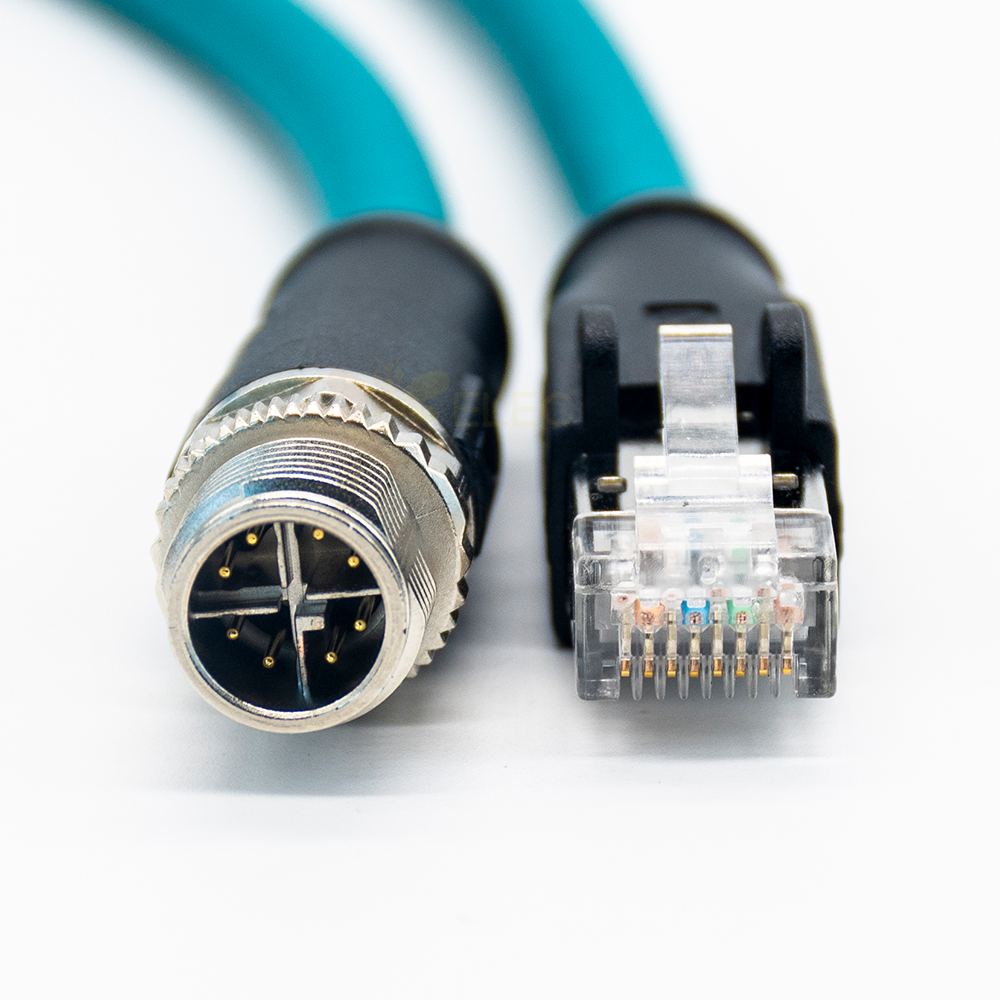Introduction
M12 connectors are widely used in various industries for their robustness, reliability, and ease of use. These connectors come in different types and configurations to suit a variety of applications and requirements. In this article, we will delve into the details of the various types of M12 connectors, including their gender, coding options, Termination Types, pin configurations, orientation, and shielding capabilities. By understanding the specifics of each option, you can make informed decisions when selecting M12 connectors for your specific needs.
Gender
M12 connectors are available in different gender configurations, providing versatility in establishing connections. Let's explore the different options:
Male Connectors
Male connectors feature pins that plug into corresponding female connectors. They are typically used as the output or transmitting end of a connection. Male M12 connectors come in various configurations, including straight, angled, T-shaped, and Y-shaped designs. These options allow for flexibility in cable routing and enable connections in tight spaces or unique orientations.
Female Connectors
Female connectors have sockets that receive the pins of male connectors. They serve as the input or receiving end of a connection. Female M12 connectors are also available in straight, angled, T-shaped, and Y-shaped designs, ensuring compatibility with different cable orientations and installation requirements. The combination of male and female connectors enables the establishment of reliable connections in diverse systems.
Male-to-Male, Female-to-Female and Male-to-Female Connectors
In addition to standalone male and female connectors, M12 connectors also come in configurations that facilitate specific connection needs. Male-to-male connectors and Female-to-Female Connectors allow for the direct coupling of two male connectors or femaleconnector, while male-to-female connectors provide a bridge between male and female connectors. These options offer versatility in connecting devices or extending existing connections.

Coding Options
M12 connectors can be coded to prevent misconnections and ensure proper mating. Different coding options are available, each serving specific purposes. Let's explore the commonly used coding options for M12 connectors:
A, B, C, and D-Coded Connectors
M12 connectors are available in A, B, C, and D coding options, each providing a distinct keying mechanism. The coding ensures that connectors with different codes cannot be mated together, reducing the risk of connection errors and improving system integrity. Each coding option is designed to meet specific application requirements:
- A-coded connectors are the standard coding type for M12 connectors. They are widely used in industrial applications and support various data and signal transmission needs.
- B-coded connectors are specifically designed for Ethernet applications, such as Industrial Ethernet or PROFINET. They provide reliable and secure connections for Ethernet-based systems.
- C-coded connectors are used for AC power supply connections. They have a higher current-carrying capacity and are suitable for power transmission in industrial environments.
- D-coded connectors are also designed for Ethernet applications, offering higher data transfer rates. They are commonly used in demanding industrial networking setups.
Additional Coding Options
In addition to the standard A, B, C, and D coding options, M12 connectors may also have other coding variants, such as K, L, S, T, and X codes. These coding options cater to specific niche applications and ensure compatibility within specialized systems.
Termination Types
M12 connectors offer different termination types for easy installation and connection to cables or devices. Let's explore the common termination options:
Screw Termination
Screw termination is a popular method for terminating M12 connectors. It involves using screws to secure the wires or cables to the connector, ensuring a reliable and secure connection. This termination type is widely used in industrial settings and provides excellent resistance to vibrations and environmental conditions.
Crimp Termination
Crimp termination involves using a crimping tool to compress a metal sleeve onto the wire strands, creating a secure connection. This termination method is commonly used in applications where a high level of reliability and ease of installation are required. Crimped connections provide good electrical conductivity and are resistant to mechanical stress.
Solder Termination
Solder termination involves soldering the wires directly to the connector pins. This termination method offers a strong and permanent connection. It is commonly used in applications where a high level of durability and mechanical strength is required. Soldered connections provide excellent electrical conductivity and are resistant to vibration and environmental factors.

Pin Configurations
M12 connectors come in various pin configurations, allowing for different levels of data and power transmission. Let's explore the common pin options:
- 2-Pin Connectors
- 3-Pin Connectors
- 4-Pin Connectors
- 5-Pin Connectors
- 6-Pin Connectors
- 8-Pin Connectors
- 12-Pin Connectors
These pin configurations cater to a wide range of applications, offering flexibility in data communication, power transmission, and control signals.
Orientation
M12 connectors are available in different orientations to accommodate specific installation requirements. Let's explore the common options:
Straight Connectors
Straight connectors have a linear design, with the cable entry and exit points aligned in the same direction. They are ideal for straightforward cable routing and connections.
Angled Connectors
Angled connectors feature a bend or angle in their design, allowing the cable entry and exit points to be offset from each other. This design enables connections in tight spaces or applications where cable routing needs to be directed in a specific direction.
T-Shaped Connectors
T-shaped connectors have a T-like configuration, with a cable entry point and two cable exit points at a right angle to the entry point. They are suitable for branching or splitting cable connections.
Y-Shaped Connectors
Y-shaped connectors resemble the shape of the letter Y, with a single cable entry point and two cable exit points branching out at an angle. These connectors are useful for applications that require multiple connections from a single source.
By selecting the appropriate orientation, you can ensure efficient cable routing and establish connections that suit your specific installation needs.
Shielded and Unshielded Connectors
M12 connectors can be categorized as either shielded or unshielded, depending on their ability to mitigate electromagnetic interference (EMI) and ensure signal integrity. Let's explore these options in detail:
Shielded Connectors
Shielded M12 connectors have additional shielding components that protect against EMI. They feature a metal shield or a shielding jacket that surrounds the connector, providing a barrier against electromagnetic noise. Shielded connectors are suitable for applications where EMI is a concern, such as industrial automation, robotics, or high-speed data transmission. They offer enhanced signal integrity and reliability in demanding environments.
Unshielded Connectors
Unshielded M12 connectors lack additional shielding components and are generally more cost-effective than their shielded counterparts. They are suitable for applications where EMI is not a significant concern or where the environment does not pose substantial electromagnetic interference risks. Unshielded connectors are commonly used in less demanding applications, providing reliable connections without the need for additional shielding.
Conclusion
M12 connectors offer a wide range of options in terms of gender, pin configurations, coding, termination types, orientation, and shielding capabilities. Understanding the specifics of each type and configuration allows you to choose the most suitable M12 connectors for your specific application needs. Whether you require male or female connectors, straight or angled designs, a specific pin count, a particular coding option, a preferred termination method, or shielding capabilities, there is an M12 connector available to meet your requirements. By selecting the right M12 connector, you can ensure reliable and efficient connections in various industrial, automation, and networking applications.

